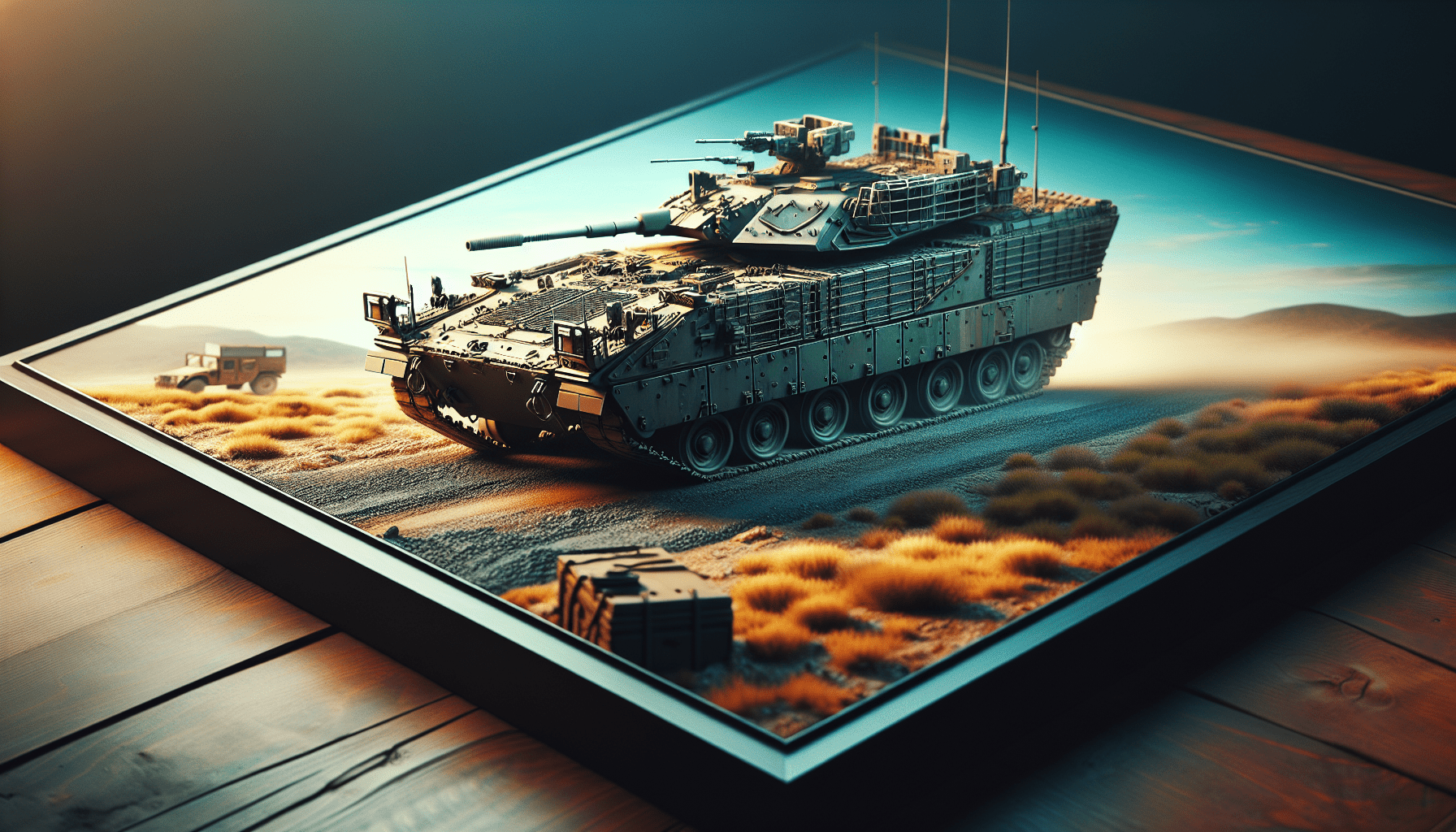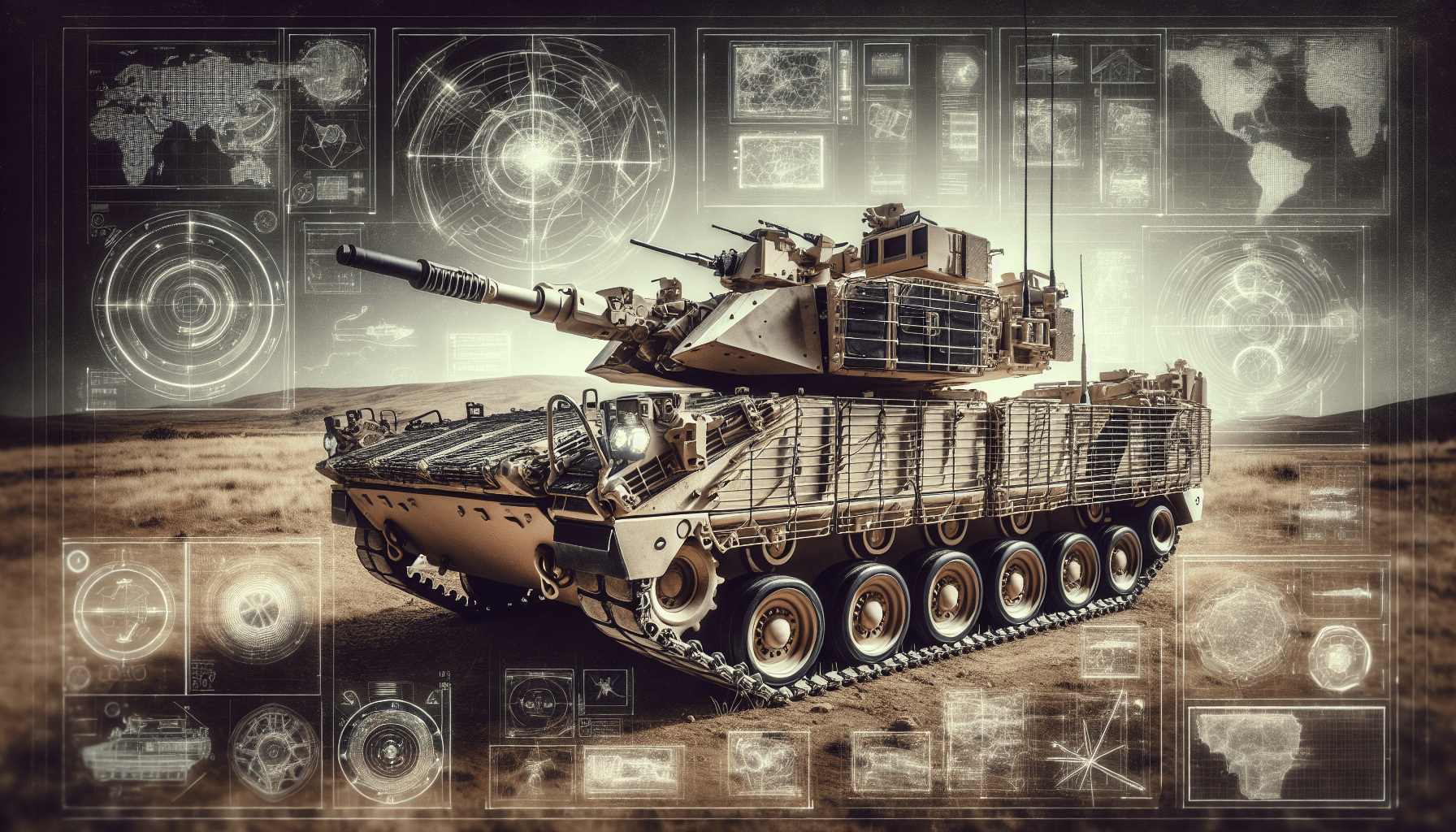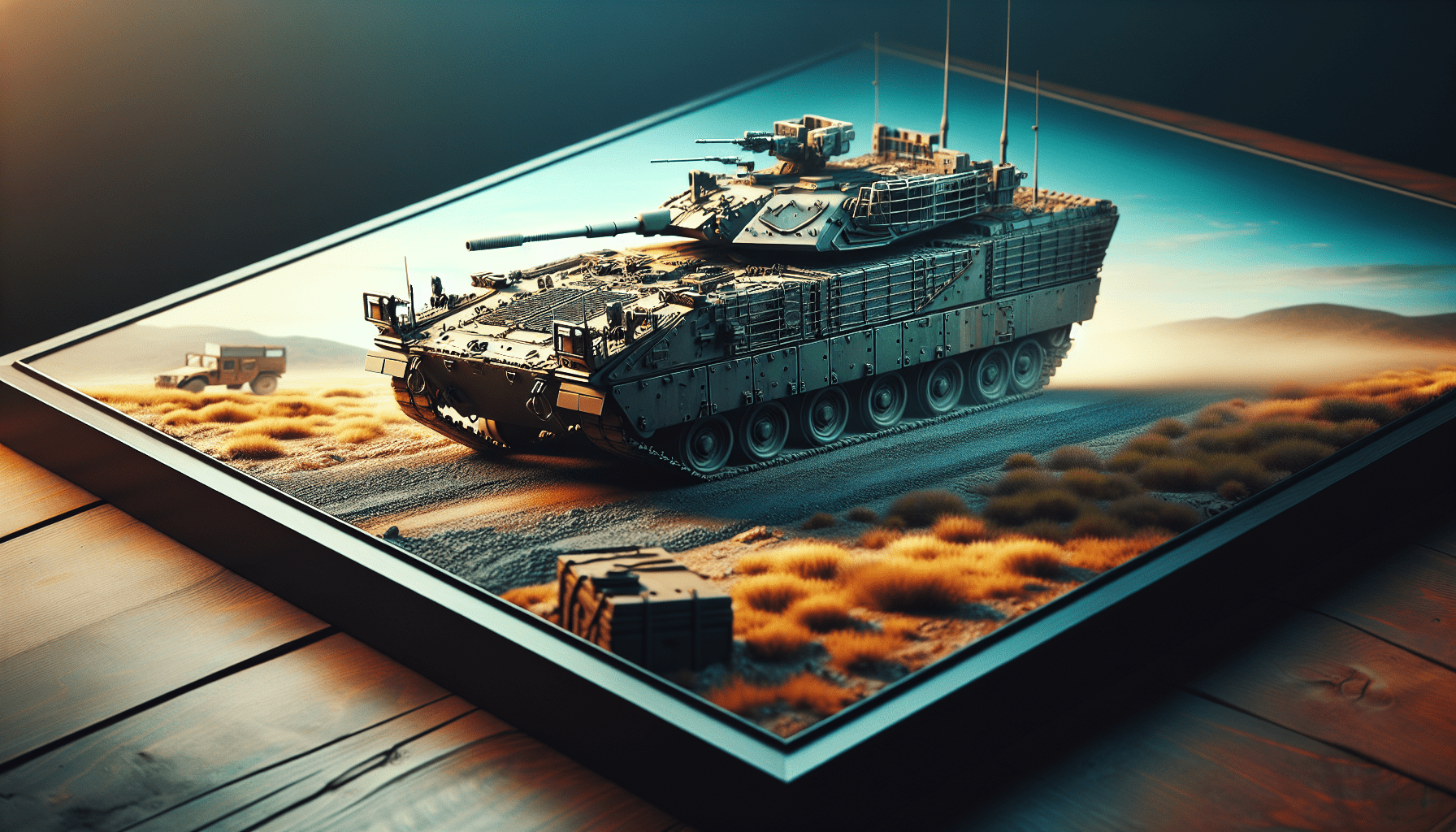This article explores the findings of a Russian analysis comparing the M2 Bradley and the BMP-3 infantry fighting vehicles, focusing on various operational, tactical, and design elements. It highlights the superior firepower, advanced fire control systems, and enhanced armor protection of the M2 Bradley as identified by Russian engineers following the capture of a Bradley in Ukraine. Conversely, it addresses the BMP-3’s advantages in terms of ammunition capacity and design philosophy focused on speed and amphibious capabilities, reflecting the varied priorities of Russian military engineering.
The discussion also sheds light on the implications of these observations for future military vehicle design, particularly within the Russian context, where there is a recognized need to adapt and enhance existing platforms. This analysis serves as a microcosm of broader trends in military innovation and adaptation, emphasizing a historical pattern of nations learning from adversaries to improve their own technological capabilities.
Analysis of M2 Bradley vs. BMP-3
Overview of the Comparative Study
The comparison between the M2 Bradley and the BMP-3 serves as a focal point for understanding modern military vehicle design, particularly in the context of recent conflicts such as the ongoing war in Ukraine. Captured by Russian forces, an M2 Bradley has undergone extensive evaluation, shedding light on its advantages and disadvantages relative to the BMP-3, which represents the Russian approach to infantry fighting vehicles. This analysis draws on tactical insights from actual combat scenarios, aiming to provide a nuanced perspective on the strengths and weaknesses of each vehicle.
Tactical Insights from the Ukrainian Conflict
The Ukrainian conflict has emerged as a critical backdrop for assessing the effectiveness of the M2 Bradley and BMP-3. Reports indicate that the Bradley’s advanced technology has enabled it to perform exceptionally well against Russian armored units, illustrating its value in contemporary warfare. Captured Bradleys have been subjected to rigorous analysis by Russian engineers, who have attempted to glean lessons from their operational successes—most notably, the vehicle’s effectiveness against advanced Russian tanks. This examination reflects a broader trend where military forces adapt and learn from the technologies employed by their adversaries.
Key Features Under Evaluation
The comparison hinges on several key features: firepower, fire control systems, and armor protection. Each of these attributes serves as a determining factor in the battlefield effectiveness of the vehicles. By examining these components, one can better understand the operational capabilities that contribute to each vehicle’s performance in real-world scenarios.
Superior Aspects of Bradley
Firepower Advantages of the Bradley
One of the most notable advantages of the M2 Bradley is its firepower. Equipped with a 25mm M242 Bushmaster gun, the Bradley provides superior accuracy and penetration capabilities compared to the BMP-3’s 30mm chain gun. The Bushmaster’s design allows for rapid and precise targeting, ensuring that it can engage enemy forces effectively even at extended ranges.
Advanced Fire Control Systems
The Bradley’s advanced fire control systems are a critical aspect of its combat effectiveness. The onboard weapons system features advanced targeting mechanisms that enhance situational awareness and enable precise targeting of threats. This capability allows Bradley crews to engage targets at longer distances with increased confidence and accuracy, translating to a higher likelihood of successful engagements during combat.
Enhanced Armor Protection
The armor protection afforded by the M2 Bradley also stands out in the comparative analysis. The vehicle utilizes a combination of composite and reactive armor systems that provide enhanced protection against the types of munitions commonly employed by the BMP-3. The Bradley’s armor has been engineered to deflect or absorb impacts, thereby increasing crew survivability in hostile environments.
Firepower Comparison

M2 Bradley’s 25mm M242 Bushmaster Gun
The M2 Bradley’s 25mm M242 Bushmaster gun is recognized for its high rate of fire and effective range. Capable of delivering both armor-piercing and explosive rounds, this weapon system serves as a formidable tool against enemy infantry and light armored vehicles. Evaluations suggest that the Bradley’s gun can achieve two times better accuracy and penetration than the BMP-3’s chain gun.
BMP-3’s 30mm Chain Gun Capabilities
The BMP-3, on the other hand, is armed with a 30mm chain gun that, while slightly larger in caliber, does not match the Bradley’s precision and lethality. The BMP-3’s gun is effective at close to mid-range engagements, but its older design means it often falls short in terms of advanced targeting capabilities. In scenarios where accuracy is paramount, the BMP-3 may struggle against well-armored targets.
Effectiveness in Real-World Combat Scenarios
In real-world combat situations, the effectiveness of the M2 Bradley has been demonstrated through engagement with advanced Russian armor, highlighting its strengths over the BMP-3. The vehicle’s combination of firepower and technological sophistication underscores its suitability in modern combat environments, where the ability to accurately identify and neutralize threats can decisively influence the outcome of engagements.
Fire Control Systems
Role of Advanced Targeting Systems
The advanced targeting systems onboard the M2 Bradley are particularly noteworthy. They provide crews with essential data, including range estimation and target tracking, effectively extending the vehicle’s engagement capabilities. This sophisticated technology empowers soldiers to make informed decisions under pressure, enhancing overall combat effectiveness.
Impact on Situational Awareness
Situational awareness is pivotal in military operations, and the Bradley’s systems significantly contribute to this aspect. The integration of thermal imaging and optical channels allows crews to operate more effectively, even in low-visibility conditions. This level of awareness provides a distinct tactical advantage, enabling Bradley operators to anticipate enemy movements and react accordingly.
Range and Engagement Maximization
The extended range and engagement capabilities facilitated by the Bradley’s fire control systems allow it to strike targets that would be challenging for the BMP-3 to engage. This characteristic significantly impacts operational strategies, permitting a more aggressive stance against enemy forces while maintaining a safer distance from potential retaliation.
Armor Protection Comparison

Composite and Reactive Armor of the Bradley
The Bradley’s armor configuration is a key aspect of its protective capabilities. Utilizing composite materials and reactive armor tiles, the vehicle’s design aims to mitigate damage from high-velocity projectiles. This innovative approach to armor leads to greater resilience on the battlefield, ensuring higher chances of crew survival during engagements.
Comparison Against BMP-3 Armor
When compared to the BMP-3, the Bradley demonstrates superior armor protection. The BMP-3’s armor is designed primarily for lightness and mobility, often sacrificing thicker armor for speed. While effective on the battlefield, this design philosophy does not provide the same level of protection against heavier, modern munitions, thus increasing the vulnerability of BMP-3 operators.
Vulnerability and Protection Analysis
While both vehicles offer certain protective benefits, the overall analysis indicates a broader vulnerability in the BMP-3 owing to its design choices. The focus on speed and firepower has led to compromises in crew safety, particularly when facing advanced weaponry. This increased risk underscores the importance of re-evaluating design philosophies in response to evolving combat challenges.
Shortcomings of Bradley
Ammunition Capacity Issues
Despite its many advantages, the M2 Bradley does have shortcomings, notably regarding ammunition capacity. The vehicle carries fewer rounds than the BMP-3, limiting its sustained fire capabilities during extended engagements. This limitation can be a critical factor when encountering heavily fortified positions or enduring prolonged firefights.
Reloading System Limitations
The Bradley’s reloading system presents another challenge. The requirement to open the hatch for reloading Tow missiles contrasts sharply with the BMP-3’s capability to reload ammunition safely from within the vehicle. This design flaw may expose Bradley crews to unnecessary risk, especially in hostile environments where rapid re-engagement is necessary.
Comparison with BMP-3’s Reloading Abilities
In terms of operational convenience, the BMP-3’s ability to reload without leaving the vehicle enhances its combat readiness. The BMP-3’s design reflects an understanding of the need for rapid resupply under fire, allowing its crew to maintain a constant operational tempo that might be hindered by the Bradley’s reloading requirements.
Design Philosophy Differences

Russian Military Design Priorities
The design philosophy behind the BMP-3 emphasizes speed and firepower, rooted in the historical context of Russian military operations which often involve high-risk, high-casualty scenarios. Russian military design relies heavily on the concept of producing vehicles that can be quickly manufactured and replaced, often prioritizing immediate combat capabilities over long-term durability.
Bradley Focus on Crew Protection
In contrast, the M2 Bradley reflects a fundamentally different design philosophy focused on crew protection and survivability. This approach recognizes that modern warfare can be unpredictable and hazardous, thus reinforcing the necessity of protecting personnel while maintaining a balance with offensive capabilities.
BMP-3’s Emphasis on Speed and Firepower
The BMP-3’s emphasis on being a lightweight, fast-moving combat vehicle is clear in its specifications. By prioritizing these aspects, Russian designers have created a vehicle that can maneuver quickly on the battlefield but may not withstand the direct impacts of sustained heavy fire. This design choice illustrates the inherent risks of favoring maneuverability over robustness.
Dimension and Speed
Size and Weight Considerations
In terms of size, the M2 Bradley is a larger vehicle compared to the BMP-3, weighing approximately 33 tons, while the BMP-3 totals around 20.6 tons. This difference in weight affects mobility, with the BMP-3 benefiting from a smaller profile, aiding in its agility on the battlefield.
Speed Comparisons: BMP-3 vs. Bradley
Regarding speed, the BMP-3 can reach up to 43 mph, while the Bradley’s top speed is approximately 40 mph. This marginal difference highlights both vehicles’ capabilities; however, the BMP-3’s superior speed can be pivotal in tactical maneuvers, allowing for faster repositioning or withdrawals.
Amphibious Capabilities of BMP-3
Another significant advantage of the BMP-3 is its fully amphibious design, which provides a critical operational edge in engagements involving water obstacles. The Bradley, while robust, does not possess this capability, limiting its versatility in varied terrain. The amphibious nature of the BMP-3 opens up strategic avenues unavailable to the Bradley, particularly in riverine environments and coastal operations.
Combat Performance
Bradley’s Effectiveness Against Russian Tanks
Bradley vehicles have demonstrated substantial effectiveness against advanced Russian tanks, such as the T-90M. Analysis of combat engagements reveals instances where Bradleys successfully incapacitated these tanks, underlining the vehicle’s capacity to hold its ground against traditionally superior armored forces.
Historical Performance Data
Historical performance data reinforces the superiority of the Bradley in several combat scenarios. The outcomes of specific engagements highlight its advanced technology and effectiveness in precision strikes, making it a formidable opponent on the battlefield and reinforcing the U.S. military’s investment in this platform.
Lessons Learned from Combat Engagements
Lessons learned from these combat engagements inform future military strategies and vehicle designs. The experience gained in Ukraine suggests an ongoing need for adaptation and innovation in military vehicle design to counter both existing and emerging threats efficiently.
Conclusion
Summary of Key Findings
The analysis of the M2 Bradley versus the BMP-3 reveals that while the Bradley excels in firepower, advanced fire control, and crew protection, it also faces significant challenges regarding ammunition capacity and reloading efficiency. The BMP-3, on the other hand, shines in terms of speed and amphibious capabilities, reflecting differing national priorities in military vehicle design.
Implications for Future Military Vehicle Design
The findings of this comparative study carry important implications for the future of military vehicle design. As technological advancements continue to shape battlefield dynamics, understanding the trade-offs between firepower, protection, speed, and operational flexibility will be increasingly crucial for military planners and engineers.
Broader Reflections on Adaptation in Military Technology
In a broader context, the lessons drawn from this analysis encapsulate the historical trends in military technology, where nations often learn from and adapt the strengths of each other’s systems. This ongoing cycle of observation and adaptation highlights the importance of continual innovation in the military space, as forces strive to maintain an edge over their adversaries in an ever-evolving landscape of warfare.
